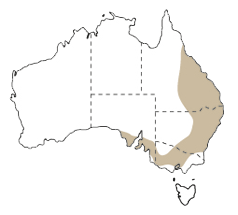SPECIES INFORMATION
IntroductionText version (.docx 33kB) Physical and behavioural characteristics
Environmental requirements for keeping in captivity
|
Natural distribution
Feeding and nutrition Base diet
Enhancements
Considerations when keeping Bearded Dragons in schools
|
ReferencesGreen, D. and Larson, T. (2001) Keeping bearded dragons. Australian Reptile Keeper Publications |
|


